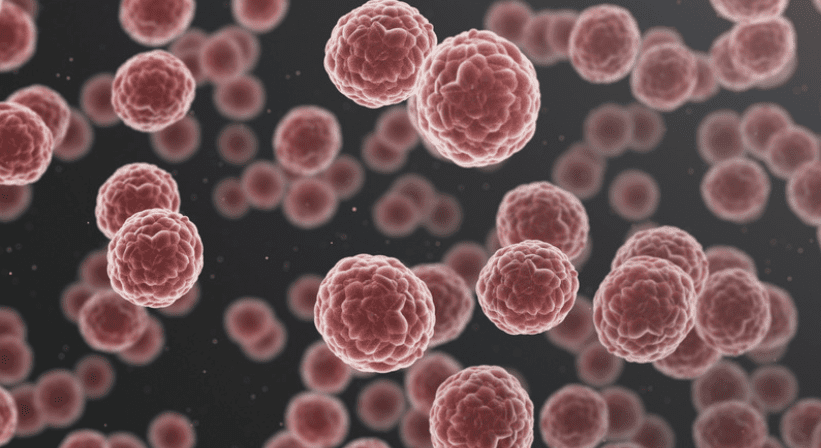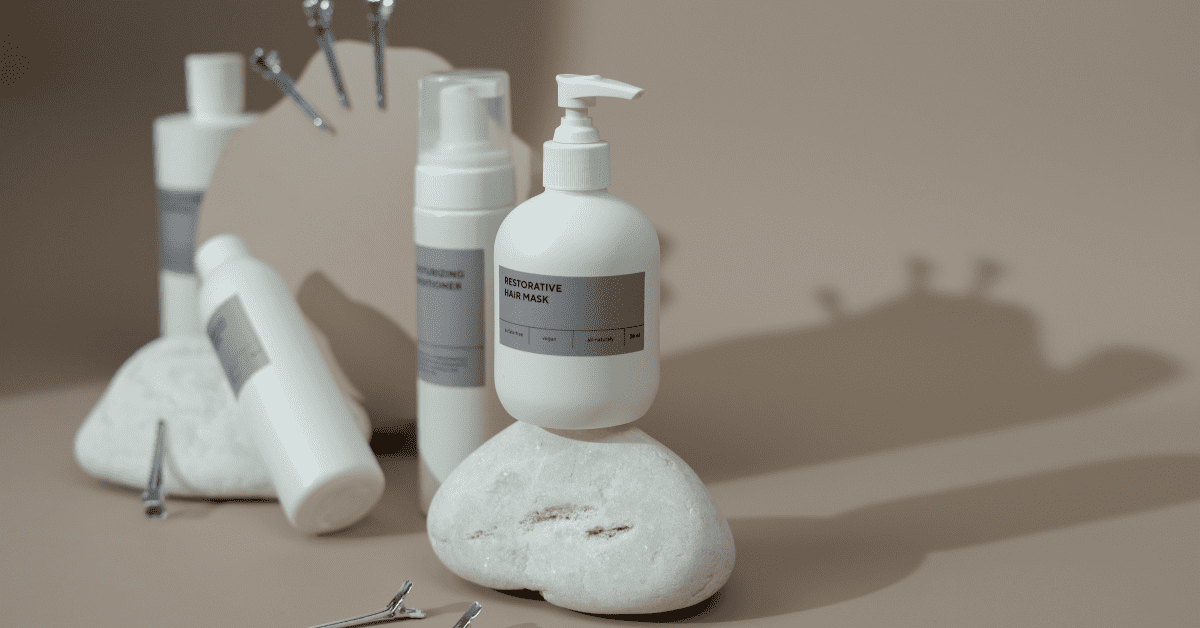Words by Eric Falstrault
When it comes to aging, cardiovascular health is one of the most critical factors for longevity and quality of life. With advancements in science, we now understand that combining interval-style resistance training, such as German Body Composition (GBC), with cutting-edge anti-aging peptides can significantly improve heart health, enhance body composition, maximize recovery, and support longevity.
This article is inspired by Ashleigh and my long-time mentor and friend, Charles Poliquin. Charles not only refined the GBC system but also embodied a passion for bridging science with practical application to improve lives. His legacy lives on in methods like GBC, which align perfectly with modern understandings of fitness, peptides, and heart health.
The Heart of German Body Composition Training
GBC training is an interval-based resistance training system designed to maximize fat loss, improve body composition, and enhance cardiovascular efficiency. Initially developed by Hala Rambie and later refined by Charles Poliquin, this method incorporates short rest periods, compound movements, and strategic sequencing to produce maximum lactate and trigger a surge in growth hormone (HGH).
How GBC Works for Heart Health
- Interval Structure: Similar to high-intensity interval training (HIIT), GBC alternates between intense work (e.g., 45–60 seconds of resistance training) and brief rest periods (30–45 seconds). This approach elevates heart rate, increases VO2 max, and strengthens the cardiovascular system.
- HGH Production: Lactate-driven workouts stimulate the release of HGH, which not only supports fat loss but also aids in recovery and tissue repair. This makes HGH a natural ally in anti-aging efforts and heart health.

Charles Poliquin’s Legacy and the Science of Longevity
Charles Poliquin was a pioneer in functional strength training and a mentor who inspired countless coaches and athletes, including Ashleigh and me. His work refining German Body Composition (GBC) training has stood the test of time because it delivers results for fat loss and metabolic and cardiovascular health.
Today, we honor and extend Charles’s vision by integrating modern peptide therapies with his timeless principles. GBC training already mirrors interval-style cardiovascular training using weights. By incorporating cutting-edge peptides, we create a holistic approach to fat loss and heart health that surpasses traditional methods.
A Workout Program for Heart Health and Longevity
This program is built around two progressive levels of intensity, tailored to trainees of varying experience levels. By combining the core principles of German Body Composition (GBC) with modern interval-based resistance training techniques, the system promotes fat loss, enhances heart health, and maximizes growth hormone (HGH) production.
Each phase challenges the body with increasing intensity while aligning with longevity and cardiovascular wellness principles.
Level 1: Foundational Strength and Heart Health
Level 1 is designed for beginners or those new to GBC principles. It focuses on building a strong foundation, using compound and isolation exercises combined in circuits to generate lactate and stimulate HGH production. The rest periods are slightly longer, allowing recovery while maintaining an elevated heart rate.
Day 1: Beginner
- A1. DB Lunges – 15-20 reps, rest 30 sec
- A2. Flat DB Chest Press – 10 reps, rest 30 sec
- A3. Lying Leg Curl – 10 reps, rest 30 sec
- A4. Medium Pronated Grip Lat Pulldown – 10 reps, rest 90 sec
Repeat A1 to A4 for 4 sets.
- B1. Leg Press – 12-15 reps, rest 30 sec
- B2. Seated Lateral Raise – 12-15 reps, rest 30 sec
- B3. Swiss Ball Crunch – 15-20 reps, rest 60 sec
Repeat B1 to B3 for 3 sets.

Day 2: Beginner
- A1. Step-Ups – 15-20 reps, rest 30 sec
- A2. Standing DB Shoulder Press – 10 reps, rest 30 sec
- A3. Lying Leg Curl (Plantar Flexed, Neutral) – 10 reps, rest 30 sec
- A4. Seated Cable Row – 10 reps, rest 120 sec
Repeat A1 to A4 for 4 sets.
- B1. DB Squats (Heels Elevated) – 15-20 reps, rest 30 sec
- B2. Seated Row to Neck (with Rope) – 12-15 reps, rest 90 sec
Repeat B1 to B2 for 4 sets.

Level 2: Hypertrophy-Specific Training
This level introduces more focused supersets to enhance hypertrophy and HGH production. Rest periods are reduced slightly to create muscular fatigue and maintain an elevated heart rate.
Day 1 Hypertrophy
- A1. DB Split Squats – 12-15 reps, rest 45 sec
- A2. Flat DB or Barbell Bench Press – 8-10 reps, rest 45 sec
Repeat A1 to A2 for 4 sets.
- B1. Barbell Zercher Good Morning – 12-15 reps, rest 45 sec
- B2. One-Arm Lat Pulldown – 8-10 reps, rest 45 sec
Repeat B1 to B2 for 4 sets.
- C1. Swiss Ball Crunch – 10-12 reps, rest 60 sec
Repeat C1 for 4 sets.

Day 2 Hypertrophy
- A1. Barbell Back Squats – 8-10 reps, rest 45 sec
- A2. Close-Grip Incline DB Triceps Press – 8-10 reps, rest 45 sec
Repeat A1 to A2 for 4 sets.
- B1. One-Legged Lying Leg Curl – 12-15 reps, rest 45 sec
- B2. Standing Barbell Curls (Shoulder Width) – 8-10 reps, rest 45 sec
Repeat B1 to B2 for 4 sets.
- C1. Low Pulley Side Bend – 10-12 reps, rest 60 sec
Repeat C1 for 4 sets.

Level 3: Advanced Compound Training
This level is designed for seasoned trainees who are ready to push their limits. It focuses on heavy compound movements with minimal rest between exercises, demanding maximum effort and delivering exceptional cardiovascular and metabolic benefits. The goal is to use 10-12 RM weights while completing all sets with only 60 seconds of rest between exercises.
Day 1: Advanced full-body
- A1. Barbell Back Squats – 8-10 reps, rest 60 sec
- A2. Barbell Chest Bench Press – 8-10 reps, rest 60 sec
- A3. Barbell Deadlifts – 8-10 reps, rest 60 sec
- A4. Medium Neutral Grip Pull-Ups – 8-10 reps, rest 60 sec
Repeat A1 to A4 for 4 sets.
Day 2: Advanced full-body
- A1. DB Split Squats – 8-10 reps, rest 60 sec
- A2. Triceps Dips – 8-10 reps, rest 60 sec
- A3. Lying Leg Curl (Plantar Flexed, Neutral) – 8-10 reps, rest 60 sec
- A4. Bent-Over Barbell Supinated Grip Rows – 8-10 reps, rest 60 sec
Repeat A1 to A4 for 4 sets.
The Role of Peptides in Cardiovascular Aging and Training
Words by Ashleigh Quint
Advancements in peptide science have paved the way for powerful interventions in managing cardiovascular aging, enhancing athletic performance, and supporting recovery. Individuals can promote heart health, improve exercise capacity, and support systemic recovery by strategically incorporating peptides alongside a structured German Body Composition (GBC) training regimen.
Key Peptides for Cardiovascular Health and Training
Peptides have unique and targeted effects on the body, making them valuable for cardiovascular support, tissue repair, and anti-aging. Below are peptides commonly used to address these goals:

Rotating Peptides: Maximizing Efficacy and Avoiding Tolerance
Rotating peptides ensures the body remains responsive to their effects. Continuous use of certain peptides, such as CJC-1295 with Ipamorelin, can lead to receptor desensitization, reducing their efficacy.
- Daily Peptides: BPC-157 and NAD+ can be used daily for systemic benefits without risk of desensitization.
- Cycled Peptides: Peptides like CJC-1295 with Ipamorelin and FOXO4-DRI are best used in cycles (e.g., 8-12 weeks on, followed by a 4-week break) to maintain their effectiveness.
Pre-Workout vs. Post-Workout Peptide Use
Peptides can serve different roles depending on when they are administered.
Pre-Workout Peptides
- Purpose: To enhance performance by increasing growth hormone release, improving vascular flow, and preparing tissues for the workload.
- Examples:
- CJC-1295 with Ipamorelin: Enhances fat metabolism and energy availability.
- GHK-Cu: Improves vascular response and tissue oxygenation.
Post-Workout Peptides
- Purpose: To support recovery, reduce inflammation, and repair cardiovascular and muscular tissues.
- Examples:
- BPC-157: Reduces inflammation and accelerates healing.
- TB-500: Promotes tissue repair and angiogenesis.
- FOXO4-DRI: Clears senescent cells and regenerates tissues.
Why Combine Peptides vs. Use Them Individually
Combining Peptides
- Benefit: Peptides like CJC-1295 with Ipamorelin and BPC-157 work synergistically to enhance performance and recovery. Combined, they maximize outcomes by simultaneously addressing multiple pathways, such as boosting growth hormone, reducing inflammation, and supporting tissue repair.
- Example: A pre-workout dose of CJC-1295 with Ipamorelin, followed by post-workout BPC-157 and TB-500, optimizes both performance and recovery.
Using Peptides Individually
- Benefit: Individual peptides can be used to target specific needs. For instance, BPC-157 may be sufficient for someone focused on injury recovery, while CJC-1295 with Ipamorelin is better suited for growth hormone deficiencies or fat metabolism.
- Example: On off-training days, BPC-157 and NAD+ alone may provide systemic support without overloading pathways.
Timing and Frequency for a 2-4x Per Week GBC Training Cycle
GBC training emphasizes high-intensity, short-rest interval workouts that boost cardiovascular efficiency while building lean muscle. Integrating peptides into a GBC cycle requires careful timing to maximize benefits:

Timing and Frequency for a 2-4x Per Week GBC Training Cycle
The table below provides peptide usage protocols tailored for training days and off days within a GBC (German Body Composition) training cycle, performed 2-4 times per week. Protocols are adjusted for men and women where applicable.
Do Peptide Dosages Differ Between Males and Females?
When it comes to peptide therapy, dosage amounts can vary significantly between males and females due to key physiological differences, including body weight, hormonal levels, and individual goals. Understanding these distinctions ensures the safe and effective use of peptides for various outcomes, such as recovery, anti-aging, or performance enhancement.
- Body Weight Considerations
Peptides are often dosed based on body weight, typically in micrograms per kilogram. Since males generally have higher body weight and lean muscle mass, their dosage requirements tend to be higher than females to achieve similar effects.
- Hormonal Variances
Hormonal differences between males and females can also influence how peptides work. For example, peptides that stimulate growth hormone release (such as CJC-1295 or Ipamorelin) or aid in tissue repair (like BPC-157) may have stronger effects in females at lower doses due to heightened sensitivity or hormonal fluctuations.
- Goal-Driven Dosage Adjustments
The purpose of peptide therapy often determines the dosage. Females may use lower doses to achieve goals such as improved recovery, enhanced skin health, or mild fat loss. In contrast, males pursuing muscle growth or enhanced athletic performance might require higher doses to align with their objectives.
- Minimizing Side Effects
When using peptides, females can be more susceptible to certain side effects, such as water retention or hormonal imbalances. Therefore, careful dosing and monitoring are essential to avoid overstimulation or adverse reactions.
Tailoring peptide therapy to individual needs while considering these biological differences ensures optimal results. Always consult with a qualified healthcare professional to determine the appropriate peptide protocol for your specific goals and health profile.

NAD+: A Cornerstone for Cardiovascular Health
NAD+ plays a vital role in cellular energy production by fueling mitochondrial function. As NAD+ levels decline with age, oxidative stress and inflammation increase, contributing to cardiovascular aging. Supplementation with NAD+ helps:
- Enhance mitochondrial efficiency.
- Reduce oxidative stress and inflammation.
- Improve endothelial function and vascular repair.
- Support energy metabolism, vital for both heart and skeletal muscles.
By combining NAD+ with peptides, individuals can address both immediate performance needs and long-term cardiovascular health.
Peptides and NAD+ provide cutting-edge tools for optimizing cardiovascular health, enhancing recovery, and supporting performance. When paired with GBC training, they offer a synergistic approach to reversing aging, promoting tissue repair, and building resilience. Rotating peptides, timing their use strategically, and effectively combining them ensures both short-term results and long-term health benefits.
References:
- Schaefer, C., et al. “The Role of Peptides in Cardiovascular Regeneration.” Journal of Clinical Biochemistry, 2021.
- Sinclair, D. “NAD+ and Mitochondrial Health in Aging.” Cell Metabolism, 2020.
- Smith, J., et al. “BPC-157 and Tissue Repair: Implications for Cardiovascular and Musculoskeletal Health.” Journal of Peptide Science, 2022.






0 Comments